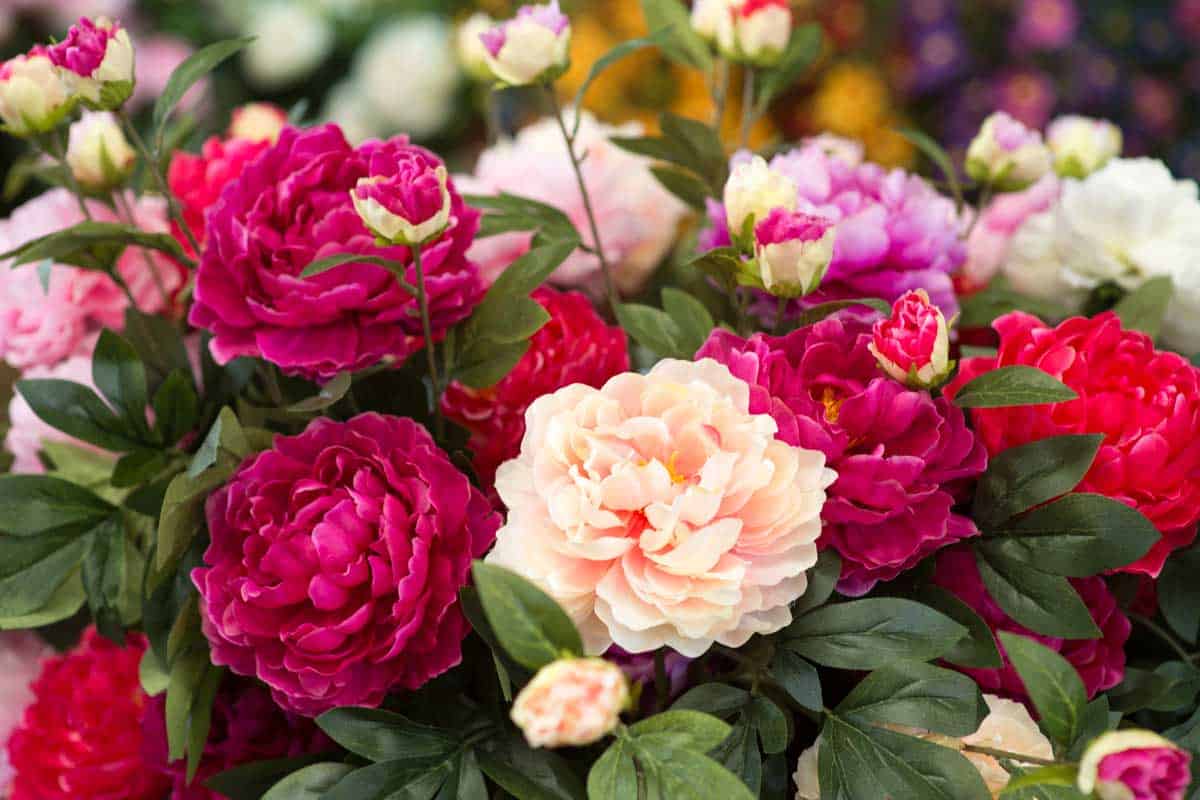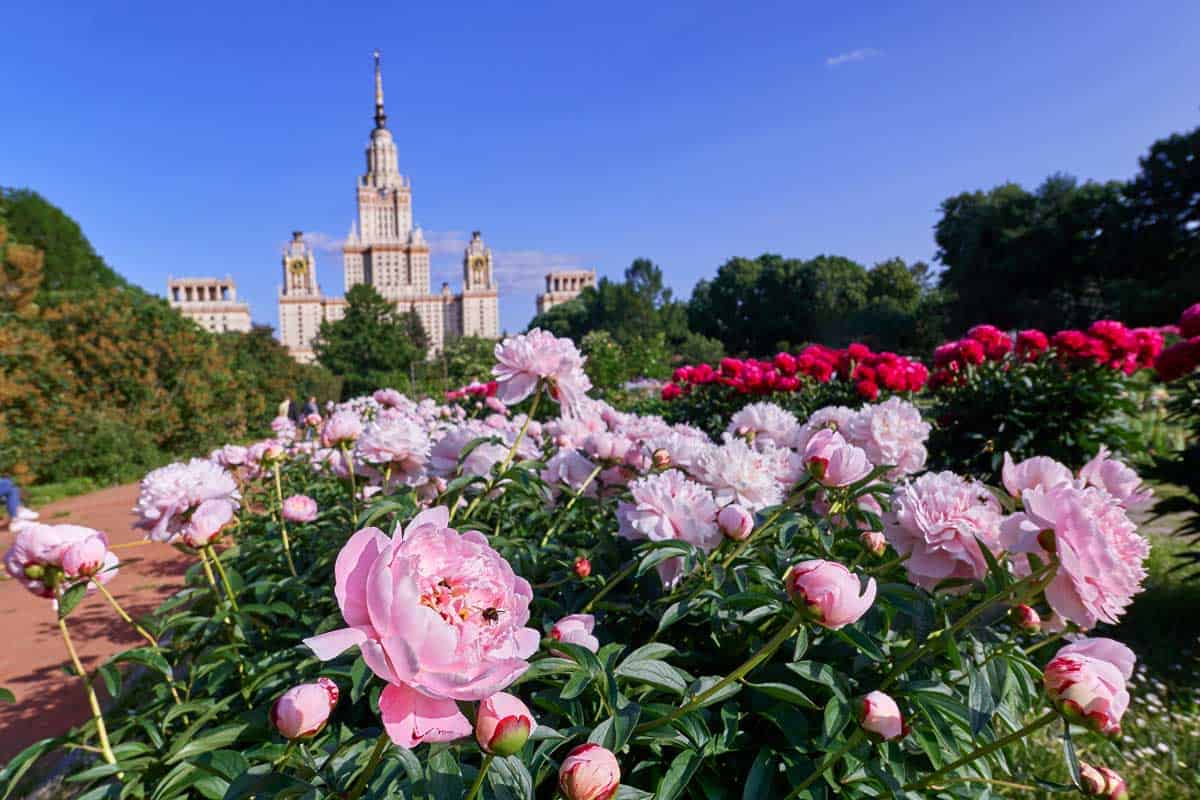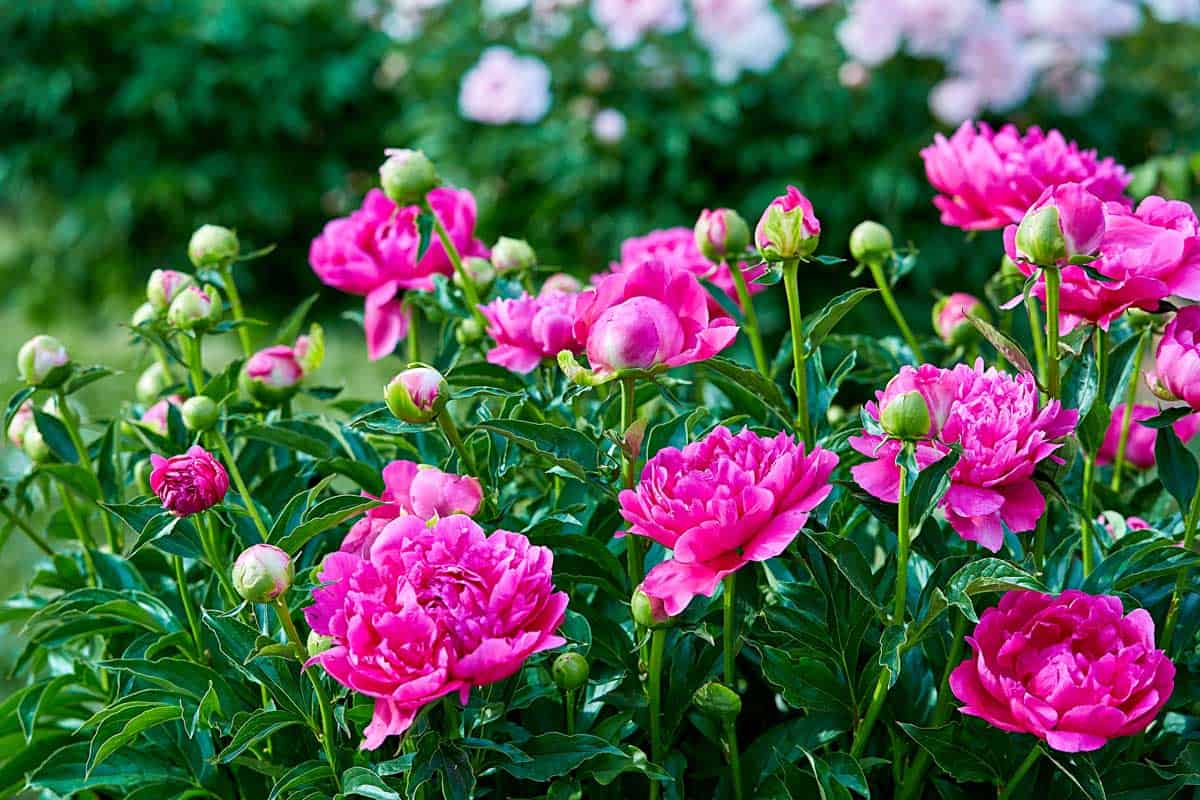 Nothing says "summer" quite like a yard full of fluffy, fragrant peonies. With their voluminous and colorful blooms, buds that are beloved by ants, and heady, unmistakable scent, peonies are appreciated by gardeners and plant lovers alike. In this article, we'll share the best information possible to help you make sure your peonies have long, healthy lives filled with the most gorgeous blooms possible.
Nothing says "summer" quite like a yard full of fluffy, fragrant peonies. With their voluminous and colorful blooms, buds that are beloved by ants, and heady, unmistakable scent, peonies are appreciated by gardeners and plant lovers alike. In this article, we'll share the best information possible to help you make sure your peonies have long, healthy lives filled with the most gorgeous blooms possible.
How to Choose the Right Peonies to Grow
After they've been established, peonies are hardy enough to bloom every year without too much hands-on care. However, to achieve this high level of performance, you'll want to choose the best possible peony variety for your climate. Here are a few things you may want to consider:
Garden Peony, Itoh Peony, or Tree Peony?
Peonies come in three different varieties:
Garden Peonies
Garden peonies, also called herbaceous peonies, are probably what comes to mind when you envision a peony. They are shrubs with lush green foliage and huge blossoms that bloom effortlessly every summer. Although they die back to the ground each fall, they return in the spring and are also incredibly long-lived, with some plants surviving over 100 years! A beautiful example of a garden peony is the Peony Festiva Maxima - read more about it in our article How to Grow Peony Festiva Maxima.
Click here to find a garden peony on Amazon.
Tree Peonies
Tree peonies are also shaped like shrubs and have blossoms that are similar to but slightly larger than garden peonies. They can grow up to ten feet tall and are made of woody branches that lose their leaves in the fall instead of completely dying back. Each summer and fall, they produce new flower buds that lie dormant over the winter and bloom in the spring. If you'd like to learn more about tree peonies, check out our article Tree Peonies: Gardening Tips, Photos, and More.
Click here to find a tree peony on Amazon.
Itoh Peonies
Itoh peonies were created by Japanese plant hybridizer Toichi Itoh, and combine the more abundant flowers of tree peonies with the dense green shrubs of garden peonies. They die back to the ground each winter to return in the spring, like a garden peony, and they have the immense, exotic flowers of tree peonies, thereby combining the best of each variety into one.
Click here to find an Itoh peony on Amazon.
What's the Best Climate for Peonies?

Garden peonies grow best in cooler climates, namely zones 3-8 because they need winter weather that gets below freezing to encourage dormancy that ensures that they will bloom the following year. Plus, they thrive in summers that aren't too warm or humid.
Tree peonies also prefer cooler temperatures but can be grown in zones 3-9. Since they don't require freezing winter temperatures to bloom, they can thrive further south than garden peonies.
Itoh peonies do best in slightly warmer weather than garden or tree peonies, preferring zones 4-9. Like garden peonies, they require full sunlight, but like tree peonies, they don't need a freezing period in the winter to bloom. This makes them perfect for warm, sunny climates, although they can survive in cooler locations as well.
How and When to Start Peony Seeds Indoors
If you want to germinate peony seeds indoors to plant outside the following spring, you should start the process about six months before you hope to plant them. This is typically October or November, depending on your climate. This allows enough time for the seeds to incubate and then start growing roots and leaves. This process works because it mimics what the seeds would experience if they were planted outside.
How to Start Peony Seeds Indoors, Step By Step
First, soak your peony seeds for about one week, and then place them in a sealed Ziplock bag with some damp peat moss. Leave the seeds in an area that maintains a temperature of 75-80 degrees Fahrenheit, like on heating pad or under a heat lamp, for three months. Check on them about every two weeks to make sure that the seeds are still in good condition and haven't started to mold.
Click here to order this peat moss on Amazon.
Next, place the bag in a location that stays between 45-60 degrees Fahrenheit, such as a basement or near a window that doesn't get much sunlight, to allow the seeds to start forming roots. This should only take a few weeks. After the roots are about 6 inches long, move the bag somewhere that is between 35-40 degrees Fahrenheit, like your refrigerator. This part of the process should take between 2 to 4 months.
After the first leaf appears, you can either plant the seedlings in pots to continue growing indoors or plant them directly outside if it's spring. Bear in mind that peonies are slow-growing plants - it takes a garden peony seedling 3 to 4 years to blossom for the first time, and a tree peony generally takes even longer. They might only grow one or two leaves the first year, but be patient. The results will be worth it!
Choosing a Planting Location for Your Peonies

Choosing the best location to plant peonies depends greatly on the type of peony you selected. We'll go through the requirements for each of the three varieties - garden, tree, and Itoh. However, all peony varieties prefer locations where they don't have to compete with other plants for sustenance, which means you should give them their space by planting them at least 3 or 4 feet away from other plants and trees.
Where Should I Plant My Garden Peony?
Garden peonies do best when grown in locations that receive direct sunlight for at least six hours per day. The soil should have a neutral to slightly acidic pH level and be moist and well-fertilized. Peonies should be planted about 3 to 4 feet apart, but only 2-3 inches below the surface. Our article Where to Plant Peonies for Getting the Best Results is a great resource for more information about the optimal spot to plant garden peonies.
Where Should I Plant My Tree Peony?
To achieve the best and longest flower growing season, tree peonies prefer full to dappled sunlight. Even though the plant itself grows faster in direct sunlight, the flowers will rapidly burn and disappear with too much sun exposure. Tree peonies do best with well-drained and fertilized soil that's neutral to slightly alkaline and have a high need for phosphate and iron supplements. When grown from a root ball, they should be planted in a hole about 12 inches wide and deep. Refill the hole so the roots can be planted about 4 to 6 inches below the surface, and make sure they're at least 3 to 4 feet away from other plants.
Where Should I Plant My Itoh Peony?
Itoh peonies do best when planted in full sun to partial shade. The soil should be well-drained and fertilized and contain high levels of nitrogen. This type of peony needs to planted very shallowly, only 1.5 to 2 inches below the surface.
How Do I Grow Peonies in a Pot?
Garden or tree peonies can be successfully grown in pots indoors or outdoors. Choose a large pot with a drainage hole - it should hold at least 1.5 feet of soil for a young peony, and measure at least 18 to 24 inches wide by 24 to 28 deep for a mature plant. Make sure to use soil that is at least 35 percent perlite, since classic potting soil does not have adequate drainage capabilities and can cause root rot. Potted peonies require less sunlight than peonies planted in the ground, so a spot with dappled sunlight is perfect. If you're growing peonies indoors, be sure to use a water catch basin and to deadhead the peonies throughout the growing season. Every few years, divide the peonies into new pots to prevent them from becoming overcrowded.
Click here to order this peony-perfect potting soil on Amazon.
Preparing the Soil for Growing Peonies
Almost all peonies prefer soil that is well-fertilized, well-drained, and either neutral or slightly acidic, although a few varieties prefer alkaline soil. If you selected soil that meets these criteria, you should only have to fertilize your peonies twice each growing season - once when they have just begun growing again in the spring, and again about three months later.
The best fertilizer for peonies is 5-10-10, which means 5% nitrogen, 10% phosphorus, and 10% potassium. Bone meal is also an excellent peony fertilizer since it contains protein in addition to nitrogen, phosphorus, and potassium. However, you should avoid highly acidic fertilizers such as coffee grounds.
Check out our article When and How to Use Fertilizer for Peonies for more information on this topic.
Click here to order this 4-10-10 fertilizer on Amazon.
Planting Your Peonies
Unlike many other plants, peony roots or seeds should be planted in the fall. Late September or October is the optimum time for most of the United States, and you can plant them even later than that if you live in the South. The most important thing is for the plant to be settled in the ground before the first frost.
When Should I Plant Peony Seedlings?
Peony seedlings should be planted in the spring because they have already undergone the incubation process that would typically take place underground if they were grown outdoors. If you do that process indoors over the winter, your peony seedlings will be ready to go in the spring.
When Should I Plant Peony Seeds?
Peony seeds should be planted outdoors in early fall so they can experience warm temperatures that change to cool and then warm up again, which they need to grow correctly. Plant them about 3/4 inch below the surface of the ground, and they should send up shoots the following spring or summer.
Peony Care and Maintenance
Even though peonies don't require much upkeep, there are still a few things you can do throughout their growing season and beyond to make sure they're in tiptop condition and blooming as fully as possible.
Should I Mulch My Peonies?
Since all peonies have roots near ground level, weeding without damaging the root system can be challenging. To avoid this problem, control weed growth by using mulch. Simply put, a few inches of mulch - wood chips, pine needles, straw, or peat moss - around the base of the peony. Just make sure to leave a few inches between the mulch and the stem of the plant. Mulch directly at the base can trap too much water, leading to disease and even the death of the peony.
Every fall, you should cover the remainder of your peonies in a few inches of mulch to help them retain warmth. Just be sure to remove it when the shoots start appearing the following spring.
Click here to order this all-natural cedar mulch on Amazon.
When and How Much Should I Water My Peonies?
As your peonies return in the spring, water them twice a week if there's no rain for at least two weeks. Water enough to penetrate 4 to 6 inches into the ground. If there's no rain, continue watering weekly throughout the summer to maintain moisture in the top 6 inches of soil. Water close to the ground to avoid getting water on the leaves, which can lead to fungal problems.
How and Why Should I Deadhead My Peonies?
Peonies should be deadheaded to help them refocus their energy on enhancing root and leaf growth instead of wasting resources on dying blooms. It also helps the plant look its best throughout the growing season, wards off disease, and encourages the plant to bloom longer. A good rule of thumb is to remove any flower that is looking wilted and faded. Our article Should Peonies Be Deadheaded? will give you more detailed information about this entire process.
How Can I Control Pests?

Several insects tend to target peonies, including thrips, armored scales, mealybugs, bulb mites, and hoplia beetles. Many of these pests can be eliminated by spraying them with neem oil or a stream of water from the garden hose. Bulb mites are attracted to damaged bulbs, so it's essential always to handle your peony bulbs with care.
It's worth mentioning here that ants are not a pest for peonies. Even though you might not like the way they look, they're doing no harm and merely eating the sugary sap that peony buds secrete before opening. Just make sure to remove any ants before taking a bouquet of peonies into your home!
When Should I Cut Back My Peonies?
The answer to this question depends on the variety of peony. Garden and Itoh peonies should be cut back to the ground after the first frost to eliminate the chance of diseases continuing into the next growing season. Tree peonies should be pruned of dead branches and to maintain the shrub's shape in the spring. For more detailed information, including how to prune each type of peony, you can refer to our article When to Cut Back Peonies (And How to Do That)?








